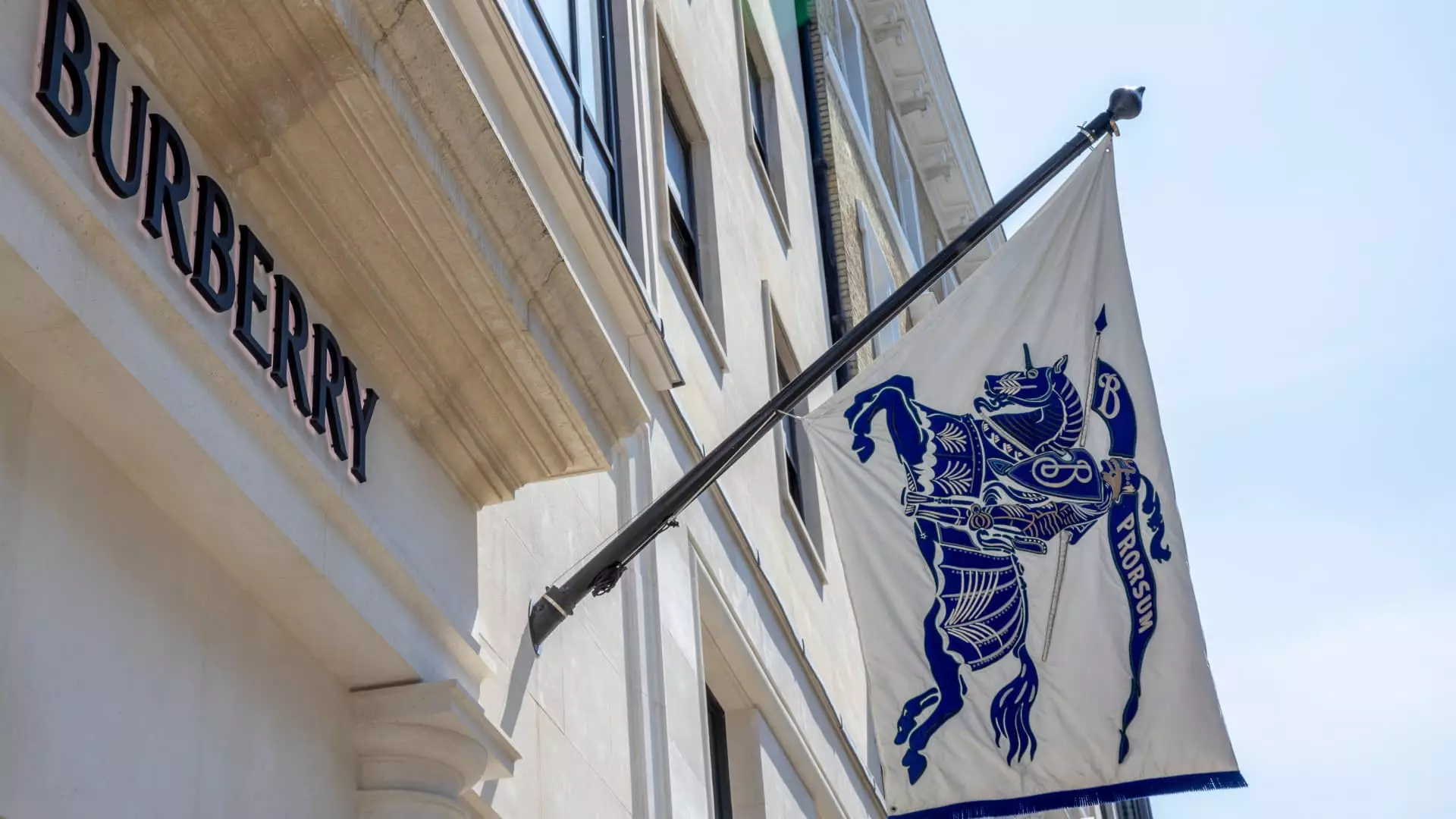When one thinks of luxury fashion brands, Burberry often stands at the forefront, emblematic of British elegance and style. However, recent developments reveal a convoluted narrative of struggle and resilience. The company recently announced a comprehensive overhaul that could result in a staggering reduction of approximately 1,700 global roles as part of its long-term restructuring plan. This is more than a mere series of administrative adjustments; it paints a picture of desperation as traditional luxury houses confront the dual pressures of shifting consumer preferences and geopolitical uncertainty.
Sales Trends: A Dismal Outlook
In the latest fiscal quarter, Burberry’s sales experienced a concerning dip, decreasing by 6%—an outcome that fell short of the already grim expectations set by analysts who had predicted a 7% drop. For the entirety of the fiscal year, the sales figures reflected a significant downturn, down 12% compared to an anticipated 13% decline. Despite total revenue slightly surpassing estimates at £2.461 million, the overall narrative is one of decline, especially exacerbated by a stark performance drop in the Asia-Pacific region. Surprisingly, the Americas, once a beacon of growth potential, ended the year with a surprising 4% dip. This complete reversal of fortunes signals a profound disconnect with consumers who are seemingly lost in the undulating tides of luxury branding.
Macroeconomic Challenges and Leadership Optimism
The broader economic landscape has undeniably cast a shadow over Burberry’s aspirations. At a time when consumers are grappling with tightened budgets, Burberry’s announcement hinted at challenges from geopolitical dynamics and uncertainty concerning U.S. tariffs. It’s almost ironic that the fashion house highlighted their previous performance as a bright spot during the third quarter, only to see it collapse into a disappointing year-end report. CEO Joshua Schulman remains optimistic, asserting that “Burberry’s best days are ahead.” This can be perceived as both hopeful and, frankly, naive. Are they genuinely in touch with the consumer’s pulse or simply hoping that a historical legacy would somehow rekindle interest?
The Cost of Transformation: A Double-Edged Sword
Enter the pivotal question: Is the drastic reduction in workforce a necessary evil in the path towards revitalization? On one hand, significant organizational changes can streamline operations and cut costs; on the other, they risk obliterating the very fabric of the brand’s identity built over centuries. The loss of jobs is poignant, a stark reminder of the human cost intertwined with corporate strategy—are such cuts justifiable in the name of a sustainable future, or do they reveal a brand out of touch with both employees and consumers alike?
The overhaul is emblematic of a luxury sector at a crossroads, where brands must recalibrate their identities to survive. Burberry’s struggle is symptomatic of a broader crisis in the fashion industry, where traditional models are faltering under the weight of changing market dynamics. Whether this bold transformation will yield fruit or simply deepen their current plight remains to be seen.

